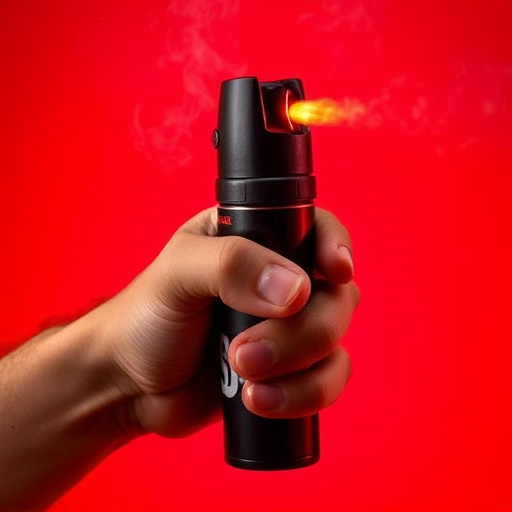Pepper spray, a powerful self-defense tool using capsaicin from chili peppers, creates a mist that temporarily disables attackers, offering users time to escape or seek help. After exposure, the critical 15-minute pepper spray eye washing procedure involves flushing with clean water to dilute and wash away chemicals, minimizing damage and irritation. This simple yet vital step complements other safety measures and should be practiced regularly near an eye wash station for swift decontamination.
Personal protection devices like pepper spray and eye-washing kits are essential tools for safety in today’s world. This article delves into the critical role of chemical irritants, focusing on pepper spray composition and safety measures, as well as effective eye washing procedures. Understanding these components ensures optimal protection against potential threats, empowering individuals with knowledge to handle emergency situations effectively. Learn about the science behind these devices, their functionality, and best practices for safe use and recovery.
- Understanding Chemical Irritants and Their Role in Personal Protection
- Pepper Spray: Composition, Functionality, and Safety Measures
- Eye Washing Procedure: Steps and Best Practices for Effective Irrigation
Understanding Chemical Irritants and Their Role in Personal Protection
Chemical irritants play a crucial role in personal protection devices, particularly in self-defence tools like pepper spray. These substances are designed to cause temporary yet intense irritation, disorienting and deterring potential attackers. When used appropriately, they can provide individuals with valuable time to escape dangerous situations.
For instance, pepper spray, a common chemical irritant, works by targeting the eyes and respiratory system. The eye washing procedure is essential after exposure; it involves quickly flushing the eyes with clean water for at least 15 minutes to dilute and wash away the irritating chemicals. Understanding these mechanisms empowers individuals to make informed decisions about their safety and effectively utilise personal protection devices in critical moments.
Pepper Spray: Composition, Functionality, and Safety Measures
Pepper spray, a common personal protection device, is a chemical irritant designed to disable an attacker temporarily. Its primary active ingredient is capsaicin, derived from chili peppers, which causes a burning sensation and inflammation when it comes into contact with eyes, skin, or mucous membranes. The spray creates a mist of tiny droplets that can reach distances up to 20 feet (6 meters), ensuring users have a good chance of reaching safety.
In terms of functionality, pepper spray disrupts an attacker’s vision and breathing by causing tears, coughing, and difficulty in breathing due to the irritation. This temporary incapacitation allows victims to escape or summon help. Eye washing procedure is crucial after exposure; flushing eyes with clean water for at least 15 minutes helps to dilute and remove the irritant. It’s important to note that while pepper spray can be effective self-defense against muggers, attackers, or animals, it should only be used as a last resort and when other safety measures, like carrying an alarm or personal safety app, are not sufficient.
Eye Washing Procedure: Steps and Best Practices for Effective Irrigation
In the event of exposure to pepper spray, immediate and thorough eye washing is crucial for effective irrigation and to minimize irritation or damage. The pepper spray eye washing procedure involves several key steps that should be followed promptly. Start by removing any contact lenses before beginning the irrigation process. Then, using clean water or a specialized eye wash solution, gently pour or splash water onto the affected eyes from a distance of approximately 15-20 cm, ensuring complete coverage. Continue flushing for at least 15 minutes, maintaining constant flow to wash away the irritant.
Best practices include keeping your head tilted back while washing to prevent water from entering the nasal passage and ensuring thorough irrigation under low pressure. It’s important not to rub or massage the eyes during the washing process as this could exacerbate the irritation. After 15 minutes, gently blot the area around the eyes with a clean, soft cloth to remove any excess water. Seek medical attention if irritation persists or if you experience any vision changes. For individuals who regularly handle pepper spray, having an eye wash station nearby can facilitate swift and effective decontamination, ensuring better protection against potential eye injuries.
In conclusion, understanding chemical irritants like pepper spray is paramount for personal protection. Pepper spray, with its capsaicin composition, serves as a powerful deterrent and safety measure. Additionally, knowing the correct eye washing procedure ensures effective irrigation in case of exposure, emphasizing the dual importance of prevention and swift response when dealing with such substances. By combining awareness and proper techniques, individuals can protect themselves effectively in various situations.
